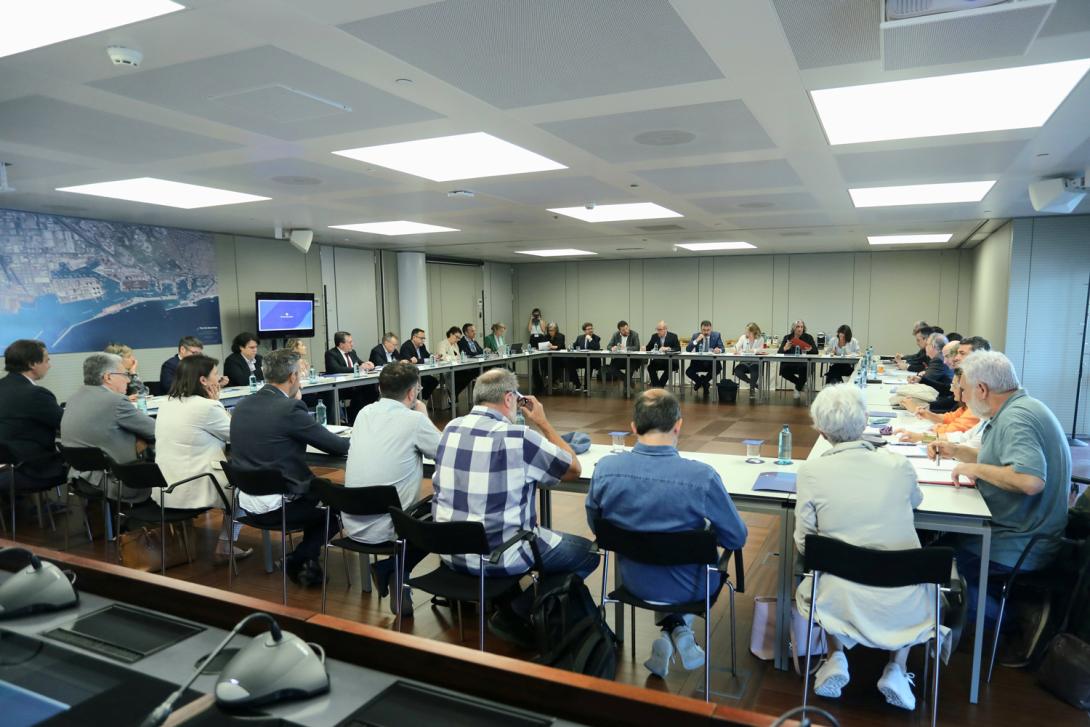The Port of Barcelona sets up the Cruise Sustainability Council
All the organisations related to the sector —Administrations, Port Community, CLIA, CDRA and economic and social entities— are invited to participate.

The Port of Barcelona has set up the Cruise Sustainability Council, a forum for working together to improve the impact of cruise tourism on the Catalan capital and has invited the administrations, entities and bodies related to this sector to take part: Barcelona City Council; Catalan Government (Generalitat de Catalunya); Provincial Council of Barcelona, Delegation of the Central Government in Catalonia, Port Community; CLIA (Cruise Lines International Association); Air Routes Development Committee (CDRA) and economic and social entities.
This Cruise Sustainability Council was created with five main objectives in mind:
• To enhance the transparency and communication of cruise activity in the Port of Barcelona.
• To create a space for sharing and coordinating the various initiatives launched by different institutions.
• To reduce the negative impacts of cruises both on an environmental and social level.
• To increase the social and economic return by the sector on the city and its hinterland.
• To strengthen the connection of cruise companies with the city's business, training and employment sectors.
By supporting this Cruise Sustainability Council, the Port of Barcelona is leading the coordination of initiatives to improve the sustainable development of cruise activity in tandem with the administrations, the Port Community and the economic and social players.
This new instrument provides continuity to the agreement signed between the Port and Barcelona City Council in 2018 which reduces the number of cruise terminals to seven. Implementing this agreement from 2018 involves around ten years' work and therefore will not end until 2027, with the closure of the cruise terminal located on Barcelona Sud wharf. This agreement involves an investment of €265 million in public and private investment (adaptation of the Adossat wharf, building the new terminals, removing the old ones, and so on), and incorporates improvements in cruise activity at the Port of Barcelona, facilitating the increase in homeport operations.
50 actions
This Council will be governed by a plenary session and will be structured into several work committees focusing on environmental, social and economic sustainability. The founding document of the Cruise Sustainability Council also suggests 50 actions that are already underway or will start shortly and are framed within the three areas indicated.
A fourth, cross-cutting axis has been proposed, intersecting these working groups, to promote transparency and communication of the progress of the Council's activities and initiatives, and the data and studies developed by the various players.
In the social sustainability area, the actions are focused on managing cruise passengers, promoting a model based on the leadership of homeport cruises, which already began with the limitation and transfer of cruise terminals and the move towards de-seasonalising the activity. Another very important line of work involves reducing congestion in the most touristy areas of the city; diversifying tourist assets and creating local jobs in the sector. As regards environmental sustainability, the actions are aimed at reducing emissions from cruise ships; promoting low-emission ships and the energy transition in the Port; optimising water management; transforming waste into biogas; improving urban mobility and working towards biodiversity. With regard to economic sustainability, the measures proposed by the Port of Barcelona refer to the increase in arrivals of homeport cruise ships; generating business in the productive sectors of the country and facilitating innovation projects.
The homeport operating model
It should not be forgotten that the Port of Barcelona is the leading European and Mediterranean homeport, the port where cruise passengers start and/or end their journey, which is the segment that provides the greatest profit to the city. Work is also underway to convert some cruise ships that are currently under the transit regime into homeport vessels using Barcelona as a homeport for some cruise-goers, thereby increasing its leadership as a port of embarkation and disembarkation for tourists.
Setting up the Cruise Sustainability Council has garnered a very broad consensus among the participating administrations, entities and bodies and lays the foundations for continuing to optimise the management of cruise tourism arriving in Barcelona, having a clear idea about exactly what the legal framework allows us to do, providing space for implementing many improvement measures. The plenary will meet two or three times a year and the various working groups will be set up. There will be a technical secretariat that will organise the various working groups responsible for specifying and implementing these measures.



